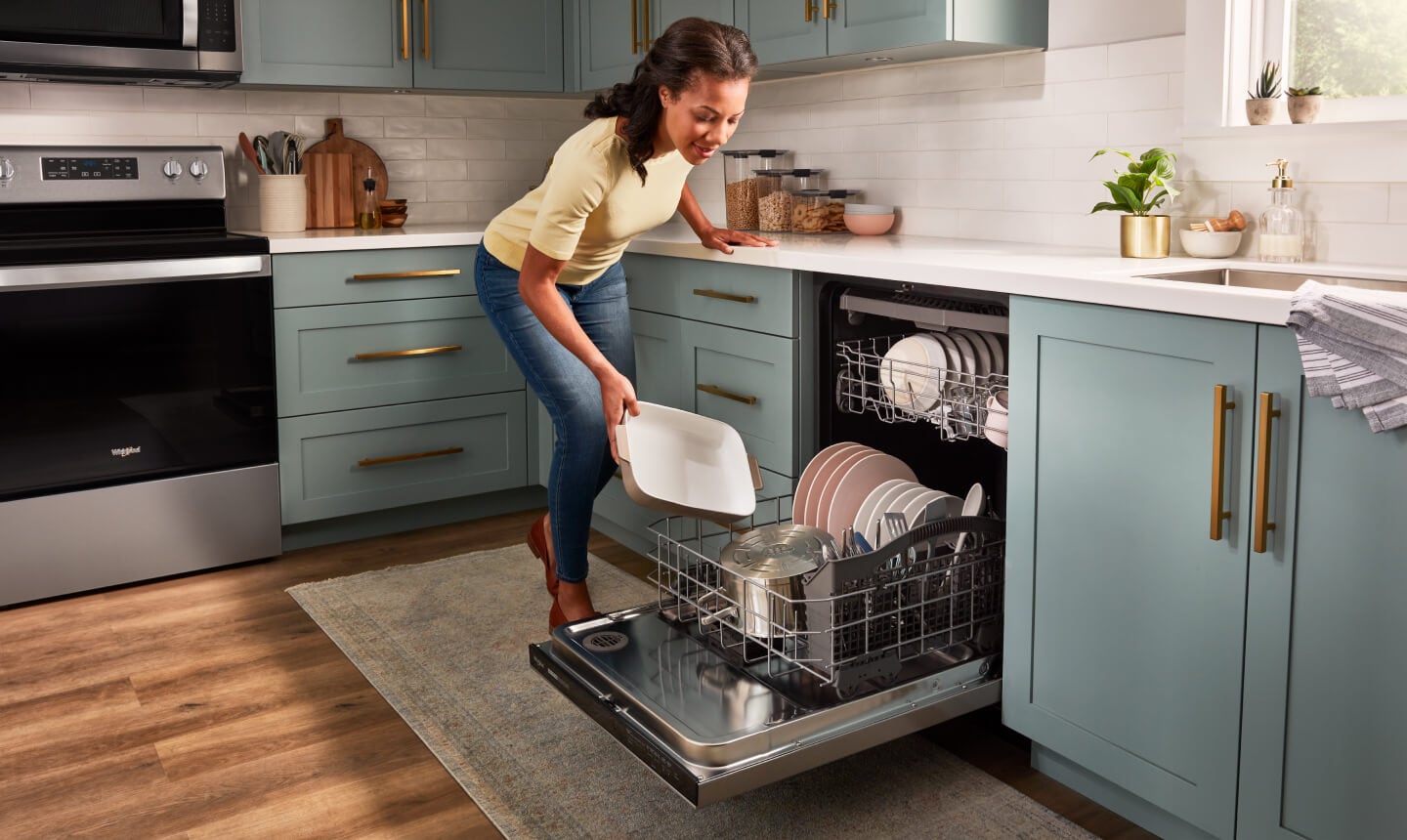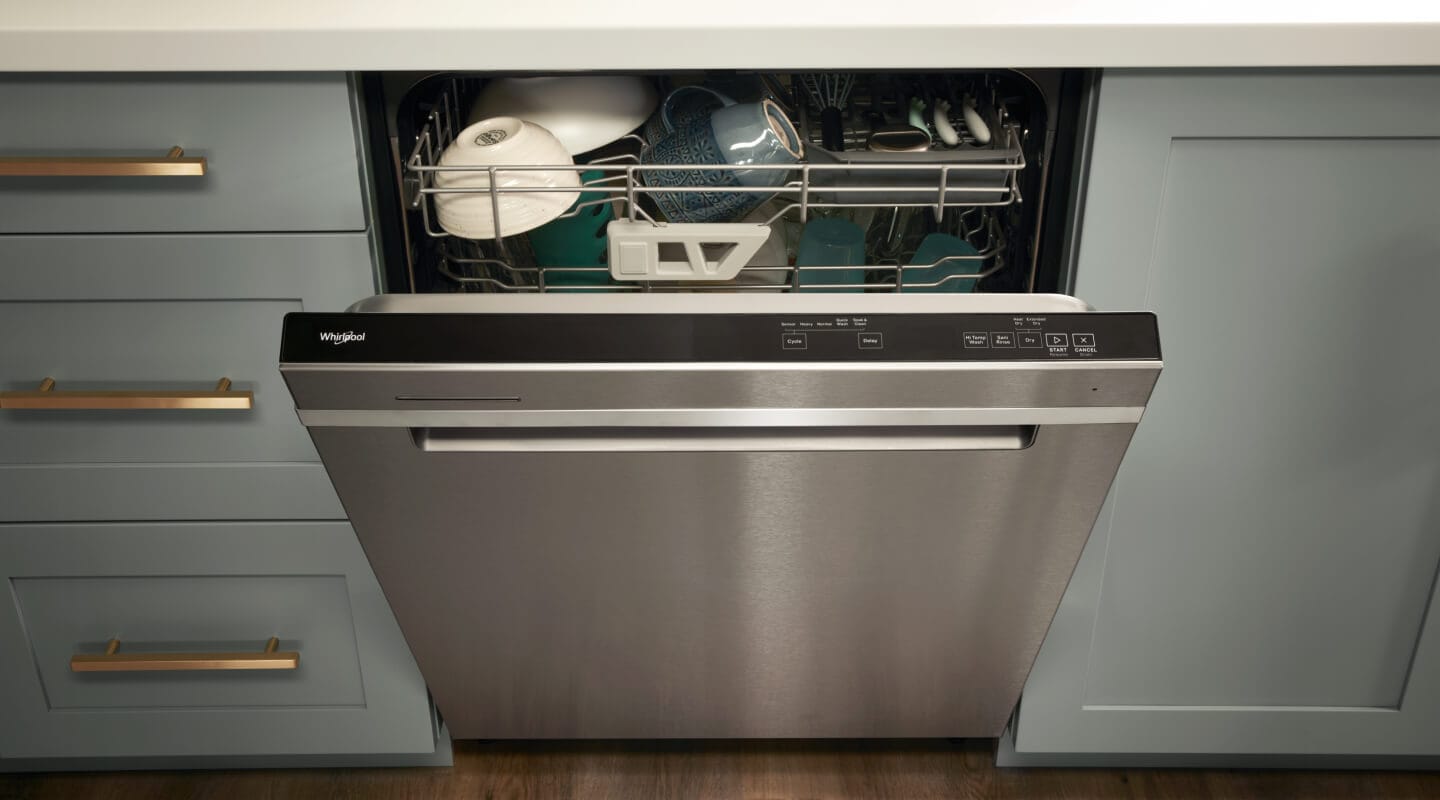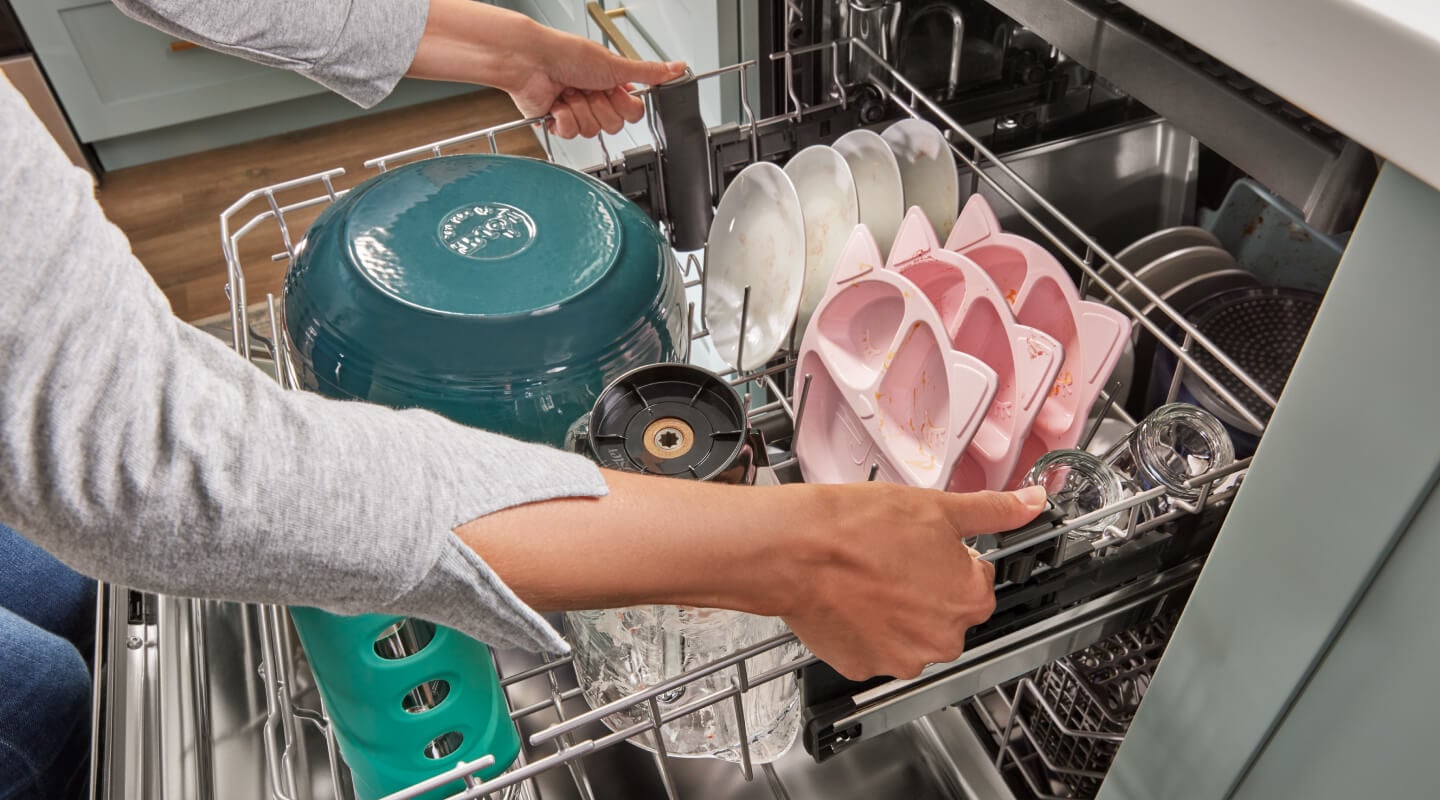
How to use a dishwasher
Dishwashers are invaluable when it comes to cleaning dishes and cookware with a fraction of the effort of handwashing. Use this guide to learn how to properly load and operate a dishwasher, how to choose the right detergent and load it into the dishwasher and which cycle to use to ensure optimal performance.
How to wash dishes in the dishwasher
To wash dishes in a dishwasher, load your cookware and dishware onto the racks, add dishwasher detergent to the dispenser, select your washing cycle and start the dishwasher. Discover how to run a dishwasher by following the steps outlined below.
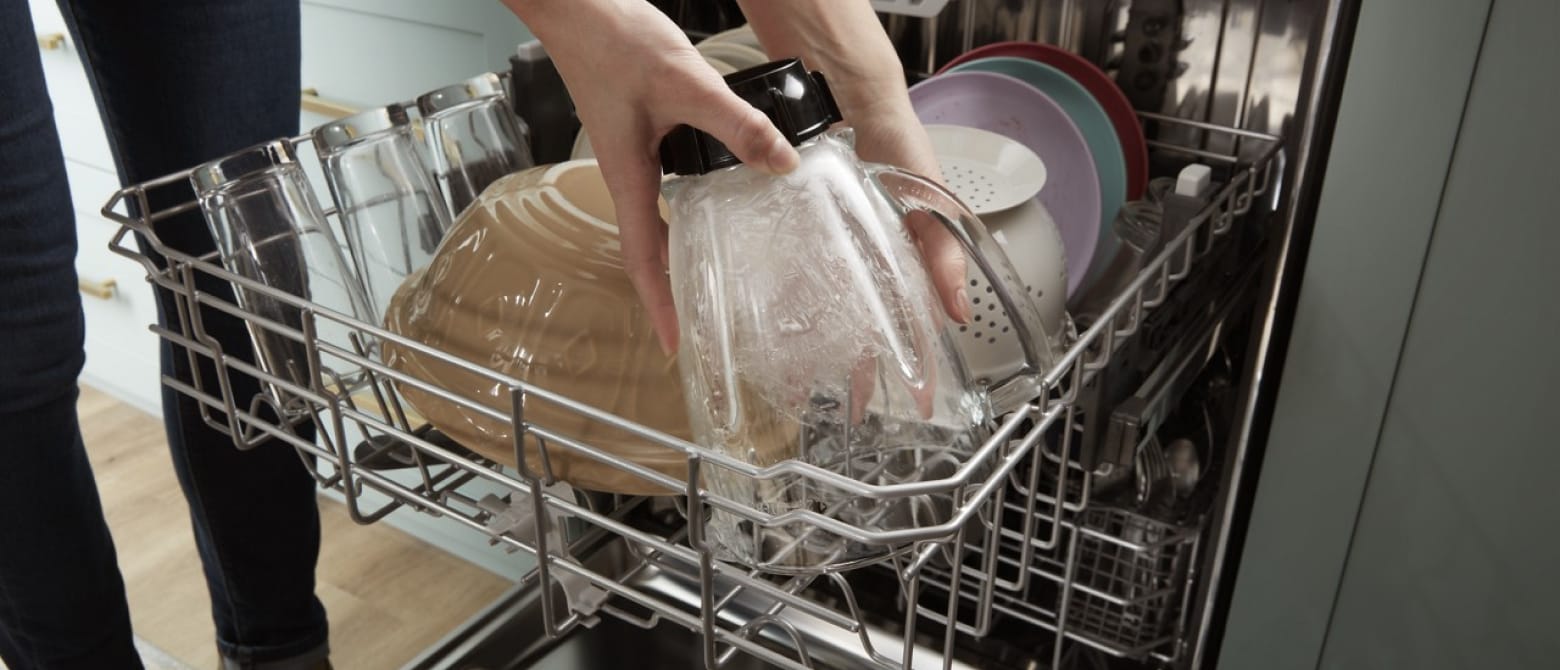

1. Load the top and bottom racks of the dishwasher
Ensure that you get clean dishes every time by scraping any extra food off the plates before loading and evenly spacing dishes with the dirty side angled down toward the water jets. Don’t overlap your dishes, since doing so may prevent the water jets from reaching the inside for thorough cleaning.
Top rack:
Load items like bowls, cups, mugs and wine glasses in the top rack.
Position small bowls and plates between tines.
Place plastic containers and lids on the top rack only to avoid warping. Always check the bottom of your plasticware to make sure it’s dishwasher safe.
Bottom rack:
Place large kitchenware like dinner plates, serving platters, dishwasher-safe baking dishes, stainless steel pots and other heavily soiled dishes in the bottom rack.
Position pots and pans along the sides or toward the back.
Add utensils to the dishwasher’s utensil basket, making sure to face sharp objects like knives downward to help avoid injury.
Before closing the dishwasher door, make sure there is nothing blocking the wash arms.
Some Whirlpool® Dishwashers come with a Third Rack, where you can load extra silverware, utensils, other hard-to-fit items or even more bowls and cups. If you need more information on what to load where, use this guide on how to properly load your dishwasher.
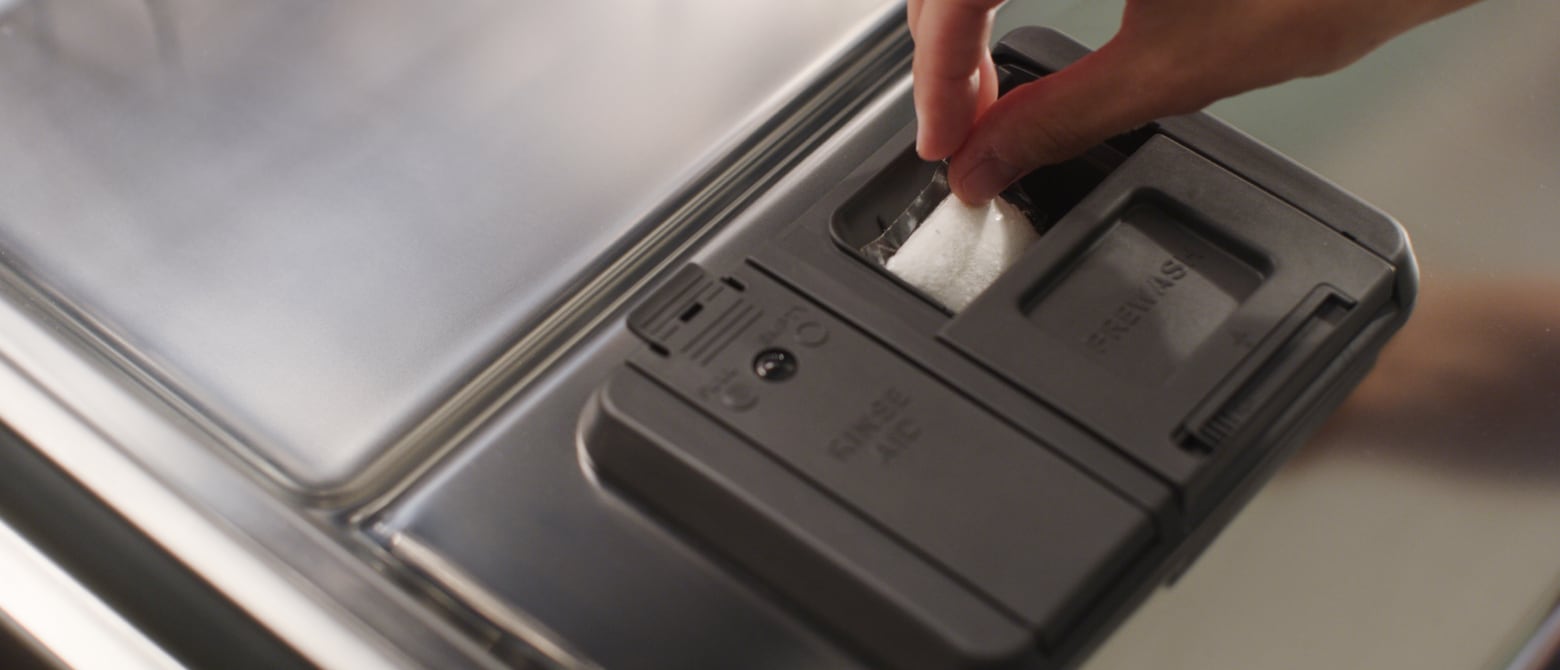

2. Load the dishwasher detergent
While it may vary by model, most detergent dispensers are on the inside of the dishwasher door. To load detergent into the dishwasher correctly:
Place detergent in the detergent dispenser.
Add rinse aid to the rinse aid dispenser up to the line that says “Full” (available on some models). If your dishwasher doesn’t have a designated rinse aid dispenser, you can purchase a rinse aid basket or use detergent tablets or packs that already include rinse aid.
Close the lid and press firmly until it clicks shut. After the dishwasher completes an initial pre-wash cycle, the detergent dispenser lid will open to mix detergent with the water.
Using the correct detergent is important for the performance of your dishwasher. Only use detergent that’s specifically formulated for automatic dishwashers, and don’t use dish soap in the dishwasher, even in a pinch. There are various types of detergents to choose from, including liquid, powder, gels, tablets and packs. Determining which detergent to use is a personal preference, though tablets and packs take the guesswork out of deciding how much detergent to use. If using liquids, powders or gels, fill the dispenser up to the fill line that most models have.
Cleaning tip:
Periodically cleaning your dishwasher is important to help keep your dishwasher and dishes in tiptop shape. affresh® Dishwasher Cleaner1 is specially formulated to help remove limescale and mineral build-up, and you can use it while running a normal load.
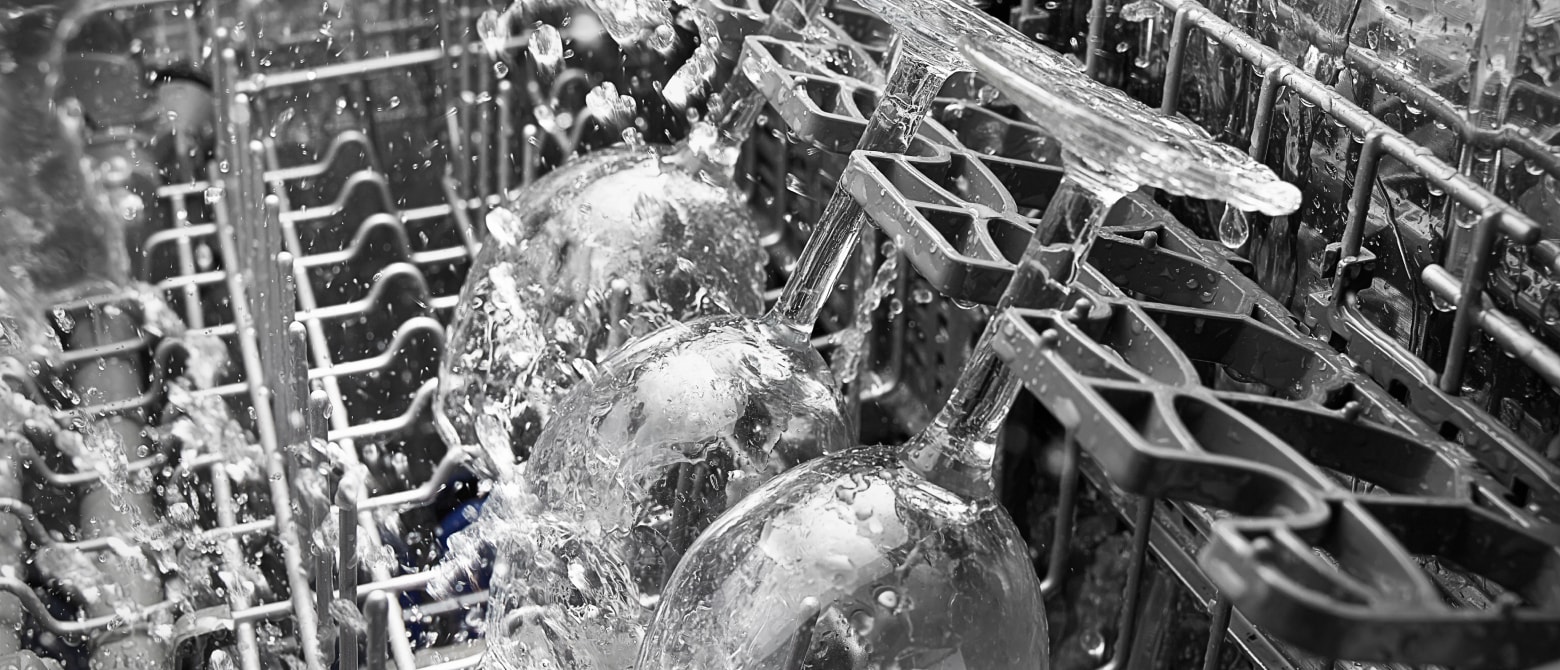

3. Select a wash cycle
Many dishwashers come with at least three cycles—Quick, Normal and Heavy Duty. Which cycle you should use depends on the size of your load and how dirty your dishes are. To set your cycle, use the buttons that are typically located on the top or front of your dishwasher door.

Quick
This cycle typically uses more water, energy and a higher temperature for fast results. Use this cycle when you have lightly soiled dishes you need cleaned quickly.

Normal
The most commonly used dishwasher cycle cleans everyday messes without using extra water. Use this cycle on day-to-day loads that are not heavily soiled.
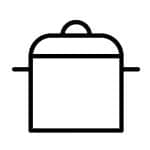
Heavy Duty
For loads that include pots and pans or other heavily soiled items, the Heavy Duty Cycle will typically use extra water and higher temperatures to clean your cookware.
For optimal performance, water temperature should be 120ºF as it enters the dishwasher. Water that is too cold may not clean your dishes as well. Whirlpool® Dishwashers may also feature additional cycles like Sensor, Prewash or Sanitize, as well as various drying options. Learn more about dishwasher cycles.
4. Start the dishwasher
Double check there is nothing blocking the wash arms before selecting your cycle, shutting the dishwasher door and pressing start. For top control models, be mindful that you will need to press start on the control panel before closing the door. Generally, a normal load will take about 1.5 hours to finish, although your display on the front or top of your dishwasher may indicate when the cycle is done. Learn more about dishwasher cycle times to ensure optimal performance.
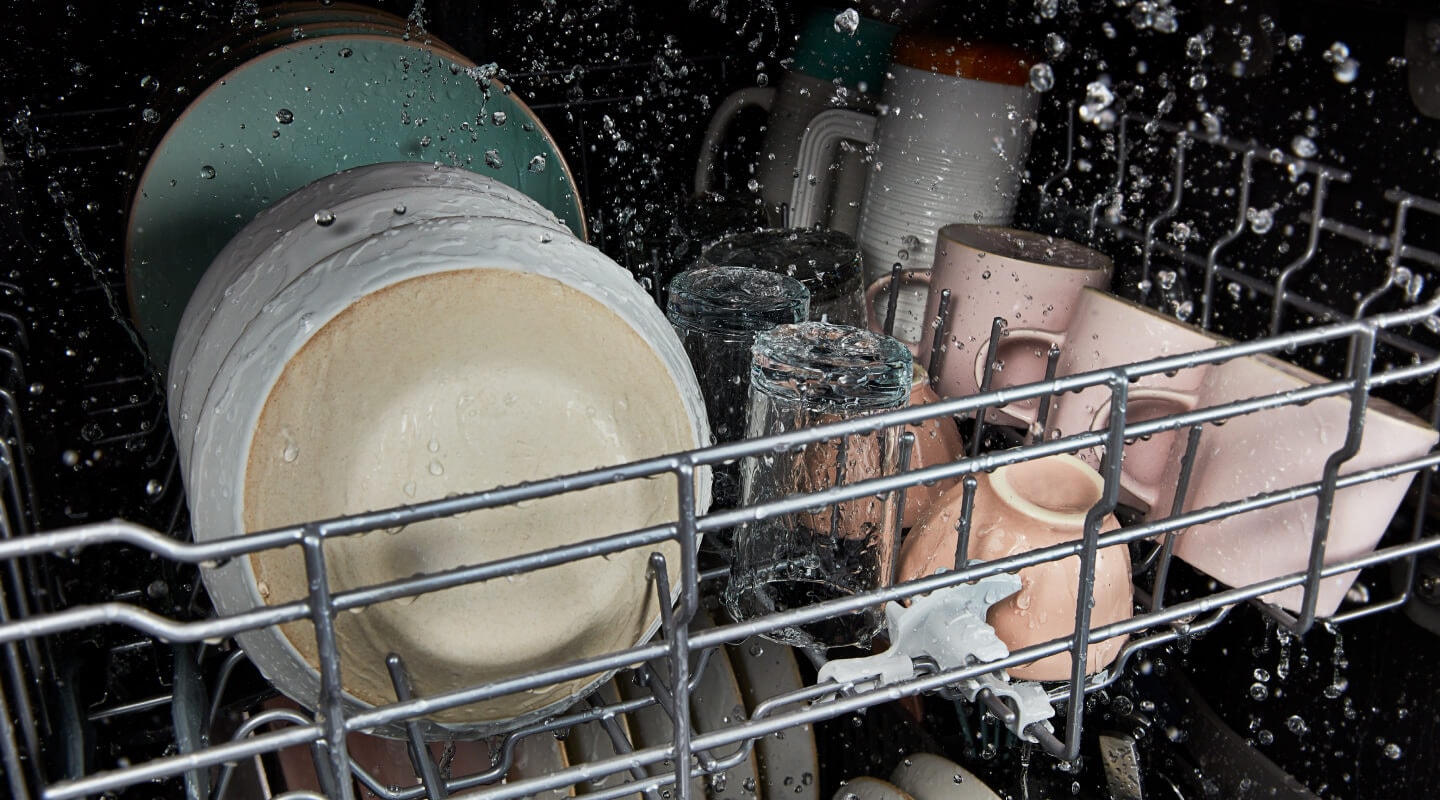
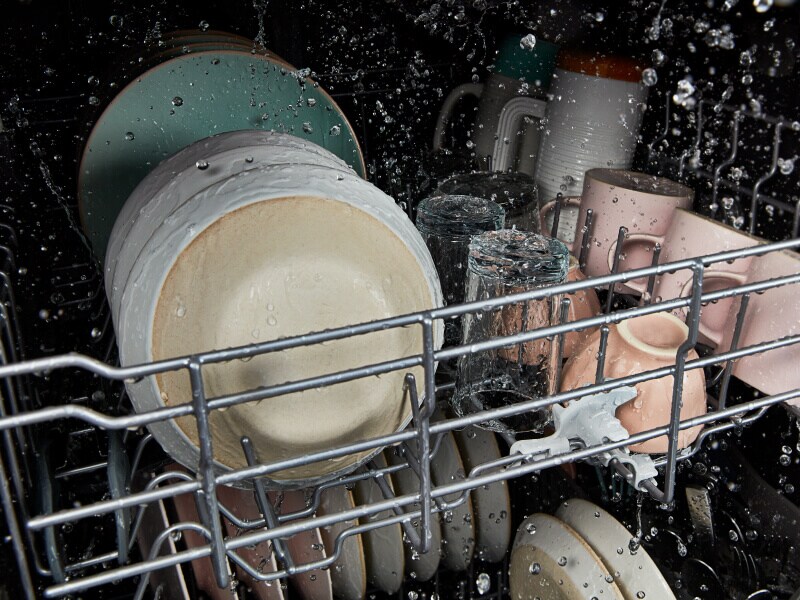
How does a dishwasher clean dishes?
A dishwasher cleans dishes by using a sequence of washing systems, heat and detergent.
First, water is released into the dishwasher tub and heated, then detergent is dispensed and circulated with the water to help get grime off of the dishes. Next, the dirty water is drained and clean water is recirculated. Lastly, the dishes are dried through a heating process. Portable dishwashers function similarly but need to be connected to a faucet before use.
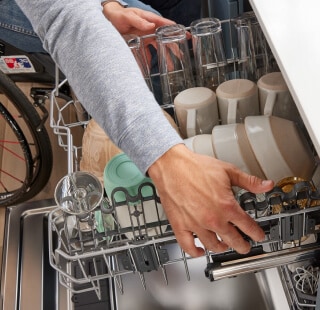
Need help finding your next dishwasher?
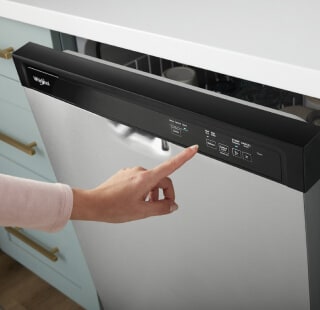
Dishwasher tips and tricks
Whether it’s keeping glasses clean and sparkly, learning how to install a dishwasher, replacing a filter or anything in between, these dishwasher tips and tricks can help you get the most out of your appliance:
Looking for more ways to keep your kitchen clean and tidy? Check out Whirlpool brand’s collection of trash compactors and garbage disposals.

Large Capacity Dishwasher with 3rd Rack
Load more, run less*
Load hard-to-fit utensils or measuring spoons to free up more space for dishes below with Whirlpool® Dishwashers with 3rd Rack
*Compared to Whirlpool® Dishwashers without a 3rd level rack.
Shop Whirlpool® Dishwashers
Select Whirlpool® Dishwashers use the power of innovative features like Sensor Cycles and Triple Wash Spray to help make kitchen cleanup more manageable. Keep your dishes clean and ready for your family’s next meal by exploring the full collection of dishwashers by Whirlpool brand.


Helping kids stay in school
Learn how Whirlpool helps end the dropout cycle by giving kids access to clean clothes through the Care Counts™ Laundry Program
Was this article helpful? Pass it on
Discover more from Whirlpool brand


home heartbeat
Ready for more tips, home hacks and appliance guides?
1. affresh® brand products and the recommending brands’ products are all owned and distributed by Whirlpool Corporation.

